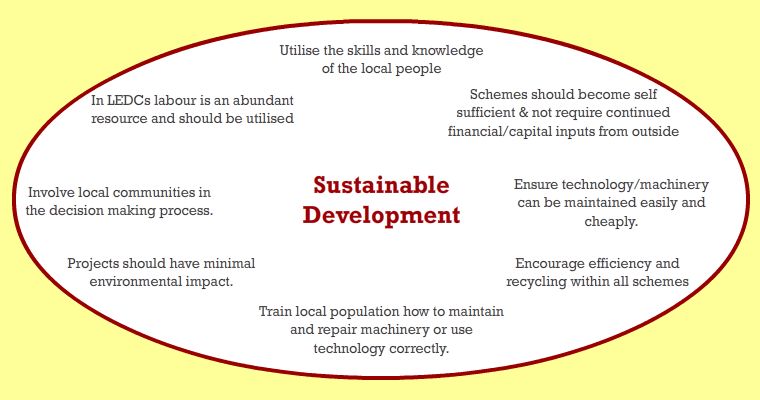The % of adults that are able to read & write.
An index that measures economic and social factors. It gives a score of between 0 & 1. The closer to 1 the higher the country ranks in the HDI.
The factors measured are:
- Real GNI/capita
- Life expectancy
- Adult literacy
The number of deaths/1000 of the population.
The number of births/1000 of the population
The number of babies that die before reaching 1 year old/1000 live births.
The total value of goods and services produced in a country in a year.
The total value of goods & services prduced by a country - excluding earnings made by foreign companies, but including earnings made by your companies in other countries.
The average number of years a person can be expexted to live in a country

Factors Affecting Development
Natural resources avaialable: (fossil fuels, minerals, metals, fertile soils, plentifull water supply).
Climate: extremes of temperature, dryness or too much water make farming difficult
Wars & political instabilty: have a negative effect on development.
Indicators of Development
![]()
![]()
![]()
![]()
![]()
![]()
![]()
![]()
Types of Aid
Short-term/Emergency Aid: this consists of provisions given immediately after a disaster. Food, bottled water, medicine, shelter. By providing these things hopefully further problems such as spread of disease can be avoided.
Long-term/ Structural Aid: aid to assist in development of infrastructure, improving education & health services. These types of aid should improve the economy & lead towards self sufficiency.
Bilateral Aid: given by one country to another (may have conditions attached).
Multilateral Aid: Aid from many countries usually given through an agency such as the IMF, UN, World Bank.
Voluntary/NGO Aid: NGOs are Non-Governmental Organisations - usually charities that individuals can give aid through.



